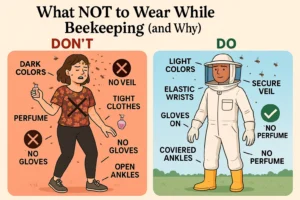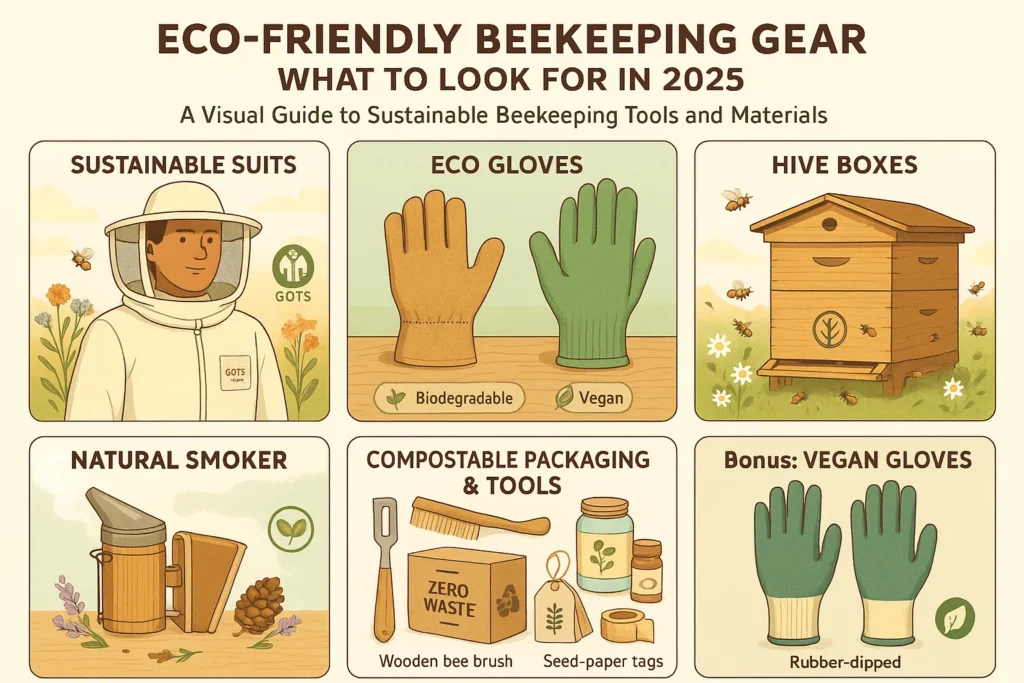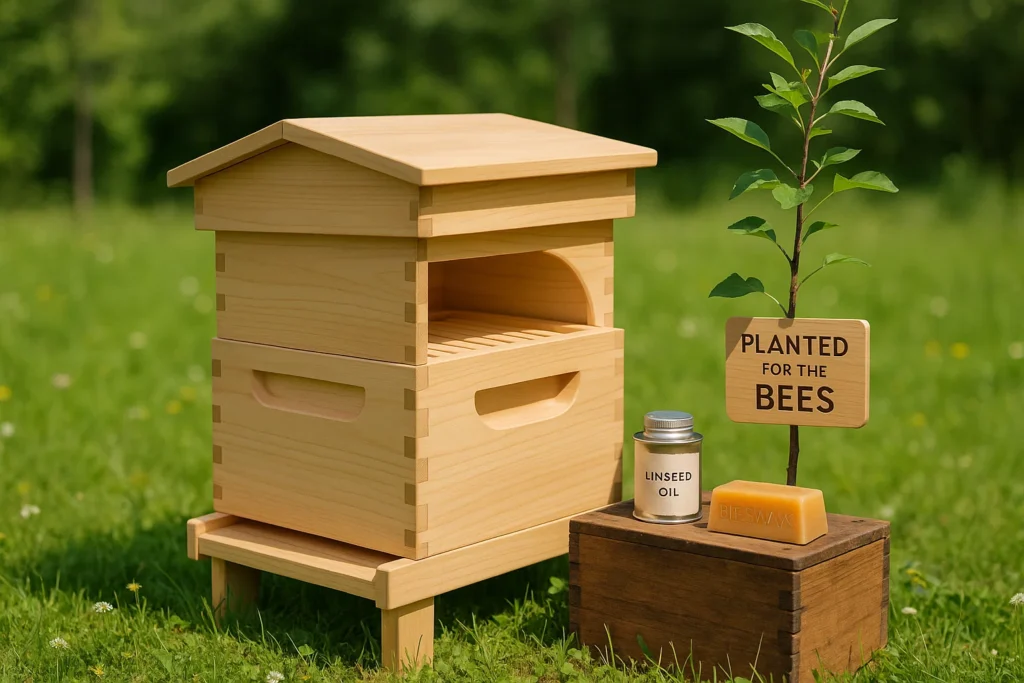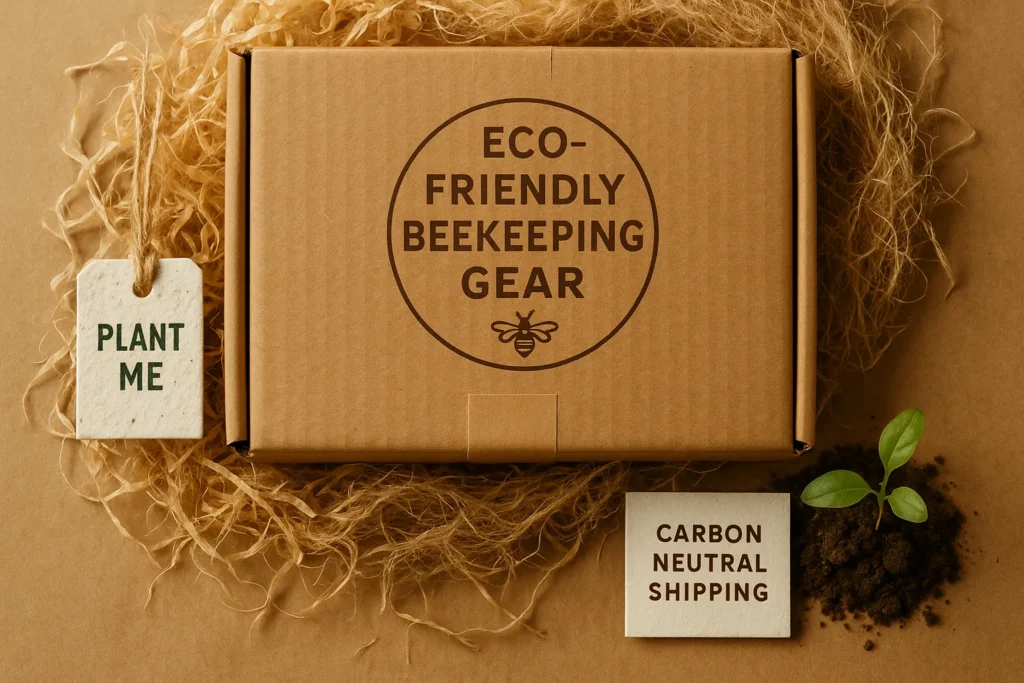
🐝 Gear Up. Stay Safe. Protect the Hive. 🌼

Beekeeping has long represented a beautiful balance between humans and nature. However, with climate change accelerating, bee populations shrinking, and pollution on the rise, that balance is under threat. Traditional gear may shield you from stings — but it often comes at the cost of the planet. In 2025, eco-friendly beekeeping gear isn’t just a trendy option. It’s a critical step forward for anyone who wants to protect bees and the environment. This shift is more than surface-level. It’s about the fibers you wear, the tools you carry, and the carbon footprint you leave behind.
You’re not just raising bees anymore. You’re nurturing ecosystems, championing biodiversity, and actively choosing sustainability over convenience.
Let’s break it down. Eco-friendly beekeeping gear follows three core principles:
Essentially, this gear helps you do your job without harming the earth. It combines function, ethics, and environmental awareness into every zipper, stitch, and tool.
In the past, beekeeping suits were mostly made from synthetic materials. These suits did the job, but they weren’t breathable or biodegradable.
Now, forward-thinking brands are offering plant-based alternatives like:
Moreover, packaging has evolved too. Instead of plastic wraps, expect compostable paper or reusable fabric bags.
Fun fact: Hemp needs 50% less water than cotton and grows faster — making it a top pick for sustainable gear.
Traditional leather gloves often come from unsustainable sources. In contrast, today’s eco-friendly gloves are crafted from:
In addition, many 2025 glove models come with re-glue kits or repair patches to extend their life — a small detail that prevents waste and saves money.
Let’s talk hives — the core of any beekeeping operation. Conventional plywood or chemically-treated lumber can leach toxins into the environment. But now, eco-conscious options include:
Some brands even plant a tree for every hive sold — giving back to the very ecosystems that support bee populations.

Your smoker should calm bees, not pollute the air. In 2025, sustainable smoker designs use:
Cleaner smokers mean safer air, less soot, and a gentler experience for both you and your hive.
The sustainable movement touches even the tiniest tools:
Low-waste extractors with detachable, repairable parts are also trending, allowing longer use without needing full replacements.
Don’t overlook how your gear is shipped. Truly eco-conscious brands:
Yes — even packaging can reflect your values.

| ♻️ Trend | 🌿 Description |
|---|---|
| Zero-Waste Gear Sets | Every item is repairable, recyclable, or reusable |
| Solar Integration | Hive tech powered by renewable energy |
| Refill & Repair Kits | Fix your gear, don’t toss it |
| New Fabric Innovations | Banana fiber, coconut buttons, and more |
| Transparent Supply Chains | QR codes trace material origin and carbon impact |
Looking to shop smart? Start here:
Make sure to look for trustworthy certifications like GOTS, FSC, and OEKO-TEX for safe and ethical standards.
Beekeeping is about more than honey. It’s about healing — not just hives, but the planet too. By choosing eco-friendly beekeeping gear, you’re standing for cleaner air, safer soil, and healthier ecosystems.
In 2025, it’s not just about better tools. It’s about better values.
So zip up your suit, light your (clean-burning) smoker, and remember:
🌍 Your gear is your message. Let it say you care.
